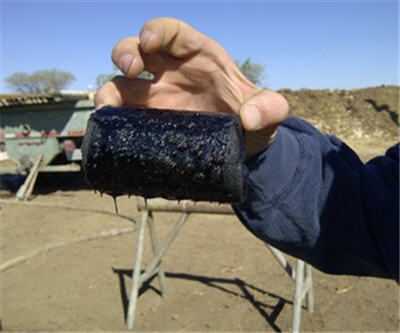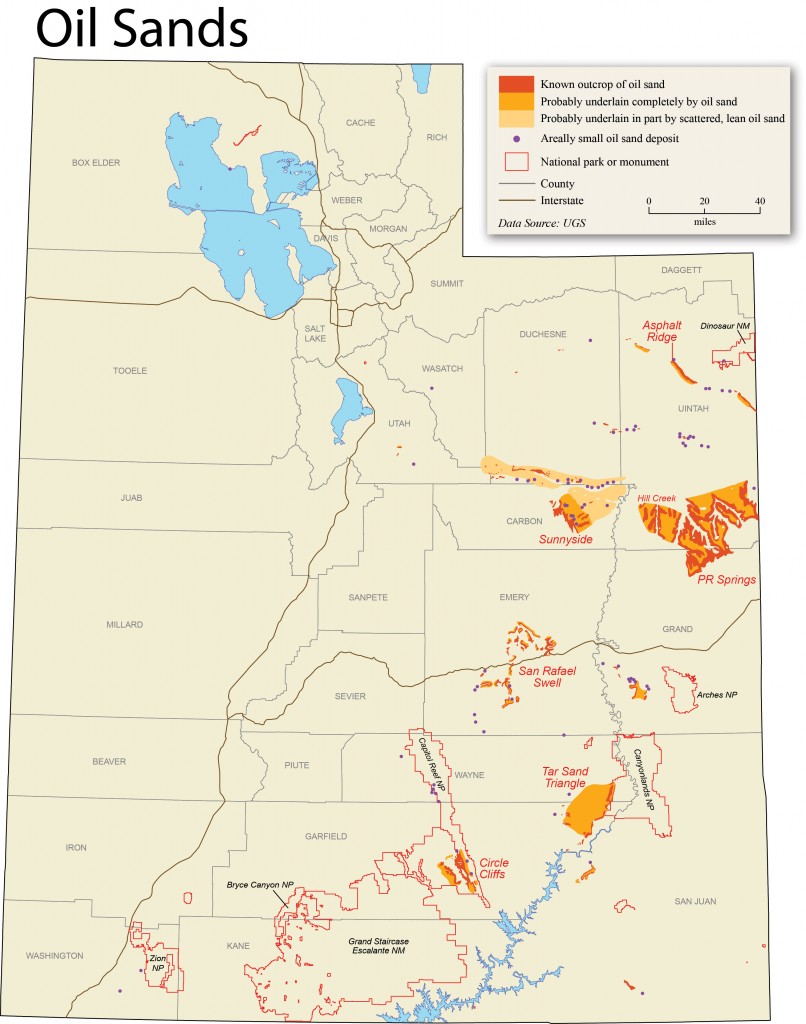Canada’s U.S. Oil Sands (TSX-V:USO) is fine tuning details to begin production at its mine in eastern Utah, one of the first commercial oil sands operations in the United States, after receiving final regulatory approvals from local officials late last week.
While the mine had already been approved for construction, the Calgary-based company recently submitted a proposal to expand it. The Utah Division of Oil, Gas, and Mining approved that plan, but ThinkProgress reported it did so on the condition that the company submits a comprehensive strategy to monitor air and water quality.
Environmentalists who have been fighting the project called the decision a victory, despite the fact that both the company and Utah authorities have argued there would be little risk to water contamination from the mine, since the operation doesn’t have any connection to a groundwater source.
But a recent public hearing, community groups presented evidence from a university professor showing that water in the Book Cliffs area would be, in fact, negatively impacted by the project, which is under construction about 300 kilometres southeast of Salt Lake City.
“Unfortunately, every decision that has been made to date is the (same) as looking out at the sky today and saying it is impossible that water can fall from the sky, and I find that infuriating,” University of Utah Geology Professor Bill Johnson said about the project last month. “The conclusions are based on data that was never intended to find a hydrological resource.”
Cheaper than in Canada

US Oil Sands say their approach eliminates need for tailings ponds, requires 50% less energy input than traditional oil sands projects and recycles 95% of the water used.
U.S. Oil Sands has invested nearly $100 million over a decade to get permits, buy equipment and develop a new technology to extract crude.
The firm says its innovative approach eliminates need for tailings ponds, requires 50% less energy input than traditional oil sands projects, recycles 95% of the water used and has small above ground footprint.
The company’s pioneering process uses a citrus extract called d-Limonene as a solvent to separate bitumen from sand. d-Limonene oil from orange rind is used industrial cleansers.
The Utah mine is being built at roughly a third of the capital cost of larger oil sands mines in northern Alberta, where new capacity is added for about $100,000 per barrel.
But U.S. Oil Sands is neither the only nor the first Canadian across the border. MCW Energy Group (CVE:MCW), small Toronto-based energy company, has built a processing plant in northeastern Utah which doesn’t utilize water for extracting the crude.
The firm, however, has not developed its own lease as it is utilizing a nearby resource owned by Temple Mountain Energy, which has total reserves of 89 million bbl on surface to 400 feet, a spokesman for MCW Energy Group told MINING.com. He noted they have long term contract at a very convenient price, with a life expectancy of about 50 years.
A new report released this week by think-tank IHS predicts costs will negatively weigh on Northern Alberta oil sands production. The study estimates that output will grow by 800,000 barrels per day to about 2.9 million bpd by 2020. That’s down by 280,000 bpd from the 1.08 million bpd growth it estimated last year, when global oil prices were twice as high.
The forecast assumes projects now under construction will be built despite low oil prices.
Longer-term, however, IHS expects oil sands growth to continue. It said the oil sands are economically competitive with resources such as deep-water and North American tight oil but face pressures including project costs, timing of non-rail transportation to new markets and shifting fiscal terms in Alberta.

Utah may seem an unlikely choice for a Canadian company to have an oil sands mine. However, the state accounts for the lion’s share of U.S. oil sands deposits that the U.S. Geological Survey estimates hold 57 billion barrels of oil, only a fraction of which can ever be recovered.
Comments
Paul Davey
The story line here is incorrect. The U.S. Oil Sands operation is NOT the first commercial project in the United States. MCW Energy Group has been operating its Asphalt Ridge oil sands project since October, 2014 with a breakthrough technology that uses NO water,…uses no high pressures or temperatures and recycles 99% of its benign solvents. Over the past 5 years MCW has worked closely with Utah’s Responsible Energy Development program and has met or exceeded all of the environmental requirements. PLans are now underway to fund, design and fabricate a 5,000 bbl/day extraction plant. Details of this project and the technology may be viewed at http://www.mcwenergygroup.com Thank you.